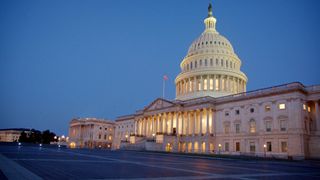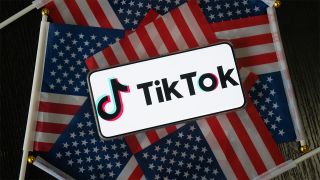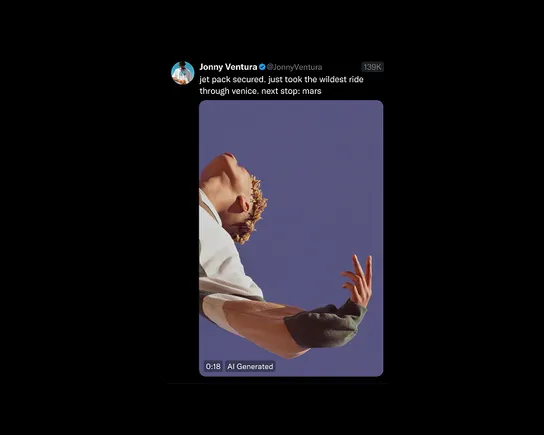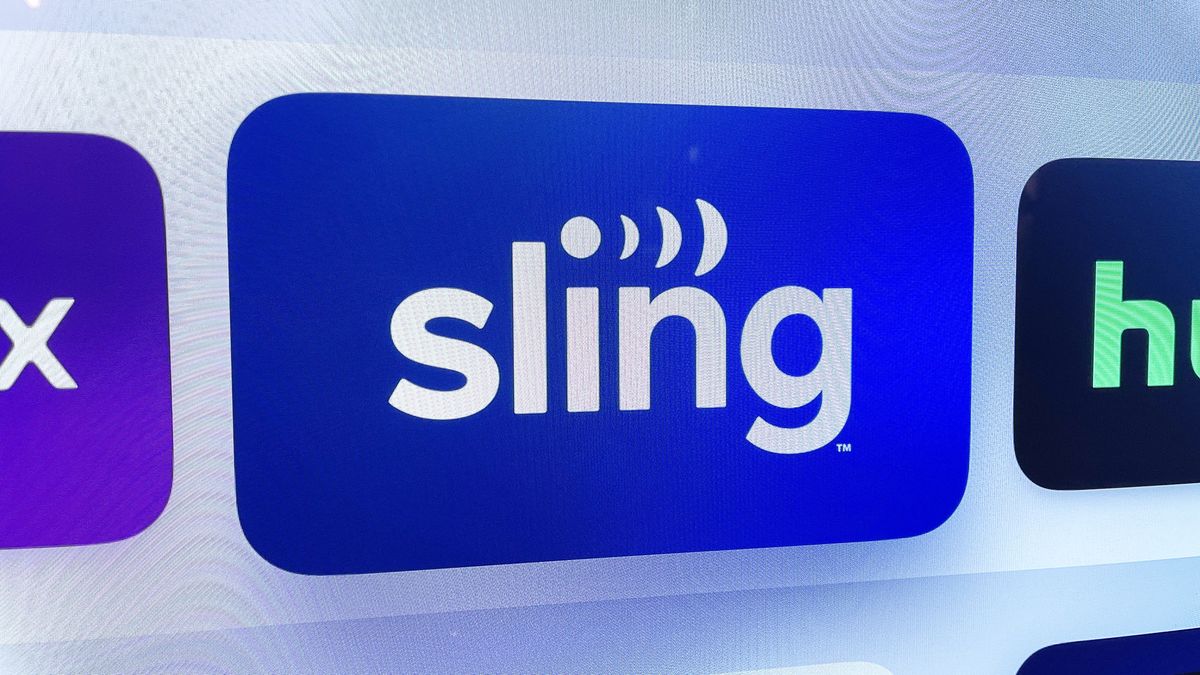Ah, TikTok. The social media app so addictive it needs to forcibly insert videos onto your feed specifically designed to remind you to log off and touch grass every once in a while. However, TikTok's clutches on the attention spans of those across the US may be forcibly removed by the government within the next couple of weeks, and users may have to start turning to the best VPNs in order to get their fix.
News of this ban came in March last year, when US President Joe Biden gave TikTok's parent company, ByteDance, nine months to sell TikTok to a US-approved buyer, or face a total ban across the whole of the United States. This ban is the result of concerns regarding the app's potential threat to national security, as well as questions surround the harvesting of user data.
With this deadline for the sale of TikTok rapidly coming around the corner, and ByteDance seemingly choosing to fight for the app not to be banned rather than find one, many people are seeing the banning of TikTok as inevitable.
As a result of this, there is a lot of information regarding TikTok and its partial bans within the US flying around at the moment. To try and clear this up a bit, and give you a better idea of where exactly the foundation of this ban came from, I have put together a full timeline, from TikTok's inception to the court case that may spell its ending, to help you make sense of it all.
The full TikTok timeline
You can find below a full timeline of TikTok's controversies, data privacy violations and bans within the US below.
The purpose of this timeline is to provide some context regarding the ban in the US, as well as highlighting the reasoning behind the ban.
- September 2017 – TikTok is launched to the international market.
- August 2018 – TikTok is merged with Musical.ly.
- February 2019 – ByteDance is fined $5.7 million by the Federal Trade Commission (FTC) for collecting data from minors under the age of 13, in accordance with the Children's Online Privacy Protection Act (COPPA). ByteDance and the FTC reach a consent decree. TikTok adds a "kids only" mode in response.
- May 2020 – An advocacy group claims that TikTok has violated the terms of its February 2019 consent decree with the FTC and files a complaint.
- August 2020 – US President Donald Trump signs an order stating that TikTok transactions will be banned in 45 days if ByteDance does not sell the app.
- August 2020 – US President Donald Trump issues an order demanding that ByteDance sell or spin off its US TikTok businesses within 90 days.
- August 2020 – The Wall Street Journal reports that TikTok tracks the data of Android users. This tracking allegedly includes IMEIs and MAC addresses, which is in direct violation of Google's policies.

- June 2021 – TikTok updates its privacy policy to include potential collection of biometric data, including "faceprints and voiceprints," sparking privacy concerns.
- June 2021 – US President Joe Biden signs an executive order, revoking the ban issued by Donald Trump. President Biden orders the Secretary of Commerce to investigate TikTok and determine whether or not it is a threat to national security.
- October 2021 – TikTok, alongside other social media sites YouTube and Snapchat, are questioned by a group of US lawmakers regarding data privacy and content moderation for underage users. TikTok is questioned specifically about whether ByteDance, TikTok's parent company in China, could pass user data to the Chinese government. ByteDance denies these allegations, stating that US user data is stored within the US, with backups in Singapore.
- February 2022 – Texas Attorney General Ken Paxton launches an investigation into TikTok following alleged violations of children's privacy and the facilitation of human trafficking.
- May 2022 – TikTok settles for $1.1 million in a class action lawsuit regarding violations of COPPA.
- June 2022 – Buzzfeed News reports that audio of 80 internal TikTok meetings reveals that TikTok has a "master admin" that can see "everything", and that employees located in China have repeatedly accessed the data of overseas users.
- June 2022 – Brendan Carr, the Federal Communications Commission (FCC) commissioner, calls for Apple and Google to remove TikTok from their app stores, citing concerns that sensitive user data was being accessed by those in Beijing, and that ByteDance would be forced to hand over user data due to the surveillance demands of the Chinese government.
- August 2022 – Keylogging functionality is discovered in TikTok's in-app browser (along with the in-app browsers of other platforms) by security researcher Felix Krause. TikTok claims this code is disabled.
- October 2022 – Forbes reports that a team at ByteDance had plans to surveil US citizens. The reason for the surveillance was undisclosed.
- December 2022 – ByteDance reveals that, as part of an investigation into the source of the leaks to Forbes and The Financial Times, its employees from China and the United States had accessed the data of two journalists and their close contacts.
- December 2022 – The US government bans the use of TikTok on devices owned by the federal government.

- May 2023 – The Wall Street Journal reports that former TikTok employees have complained about the company tracking users who view LGBTQ+ content on the app.
- June 2023 – ByteDance confirms that some of the financial information of American content creators, e.g. social security numbers and tax forms, are stored in China. This applies specifically to those who have signed contracts with and receive payments from ByteDance.
- March 2024 – US President Joe Biden signs a bill demanding that ByteDance sell TikTok to a US-approved buyer within nine months or face a total ban of the app within the US.
- April 2024 – The claims of a former TikTok employee allegedly responsible for leaking information to The Washington Post, Forbes and Buzzfeed News, are revealed to be improbable.
- August 2024 – The FTC and the US Department of Justice file a joint lawsuit against ByteDance regarding alleged violations of the February 2019 consent decree.
- December 2024 – A federal appeals court upholds the ban on TikTok in the United States. ByteDance requests that the ruling be paused while it attempts to get the Supreme Court to hear the case.
- December 2024 – It is announced that the Supreme Court will hear arguments from ByteDance as to why TikTok should not be sold or banned in the US.
- 10 January 2024 – The Supreme Court hears oral arguments regarding why TikTok should be banned or sold in the United States.
- 19 January 2024 – The final deadline for ByteDance to sell TikTok. If they do not sell, TikTok will be banned in the United States.
What if TikTok is banned in the US?
While we won't know if TikTok is being banned in the US until the 19 January, many people are worried about the impact the ban will have. Whether it's arguing that the ban itself is unconstitutional and violates citizens' free speech rights, or content creators concerned about their looming lack of income, tensions and anxieties surrounding the ban are high.
If TikTok is banned, then users will have to use one of the best TikTok VPNs in order to access the app. This is because a VPN will give them the ability to spoof their location to a country where TikTok has not been banned, effectively circumventing it.


![20 Predictions for Social Media in 2025 [Infographic]](https://imgproxy.divecdn.com/HMVhRh2JvYwAse_QsxNWdYtb_Of31-oCF2OnUe4eZqA/g:ce/rs:fit:770:435/Z3M6Ly9kaXZlc2l0ZS1zdG9yYWdlL2RpdmVpbWFnZS9zb2NpYWxfbWVkaWFfdHJlbmRzXzIwMjVfMi5wbmc=.webp)


















 English (US) ·
English (US) ·